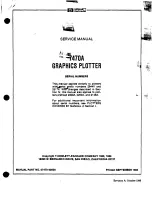
T H E O R Y O F O P E R A T I O N
5
5 - 4
V8.5e Rev 2.2.2002
l
a
n
g
i
S
-
n
o
m
m
e
h
N
c
i
l
a
n
g
i
S
e
m
a
N
e
v
i
t
c
A
l
e
v
e
L
n
o
i
t
a
r
e
p
O
-
1
D
N
I
8
D
N
I
a
t
a
d
t
u
p
n
I
h
g
i
H
l
e
l
l
a
r
a
p
e
t
y
b
r
o
f
s
e
n
i
l
t
u
p
n
I
d
e
i
n
a
p
m
o
c
c
a
e
b
t
s
u
M
a
t
a
d
K
L
C
I
P
a
y
b
K
L
C
I
P
t
u
p
n
i
l
e
l
l
a
r
a
P
k
c
o
l
c
h
g
i
H
t
n
e
s
e
r
p
e
t
y
b
a
t
a
d
a
s
e
b
o
t
S
e
h
t
o
t
n
i
8
D
N
I
-
1
D
N
I
n
o
m
u
m
i
n
i
M
.
r
e
f
f
f
u
b
t
u
p
n
i
e
s
l
u
p
S
n
0
0
3
Y
D
A
E
R
y
d
a
e
r
r
e
t
t
o
l
P
w
o
L
s
i
r
e
t
t
o
l
p
s
n
a
e
m
l
e
v
e
l
w
o
L
a
t
a
d
t
x
e
n
e
v
i
e
c
e
r
o
t
y
d
a
e
r
.
n
o
i
t
c
n
u
f
e
t
o
m
e
r
r
o
e
t
y
b
r
e
t
t
o
l
p
s
e
t
a
c
i
d
n
i
l
e
v
e
l
h
g
i
H
t
p
e
c
c
a
t
o
n
l
l
i
w
d
n
a
y
s
u
b
s
i
.
s
n
o
i
t
c
n
u
f
e
t
o
m
e
r
r
o
a
t
a
d
Table 5-2 Data Transfer
Note that the plotter goes busy after receiving each byte. The plotter
goes busy for longer periods during the execution of remote
functions, when the input buffer is full, or when an error occurs.
Table 5-3 shows the timing relationships for the remote functions.
When the input buffer receives the number of bytes necessary to
plot a full scan, a write cycle is automatically initiated, causing the
buffer contents to be imaged on the medium.
















































